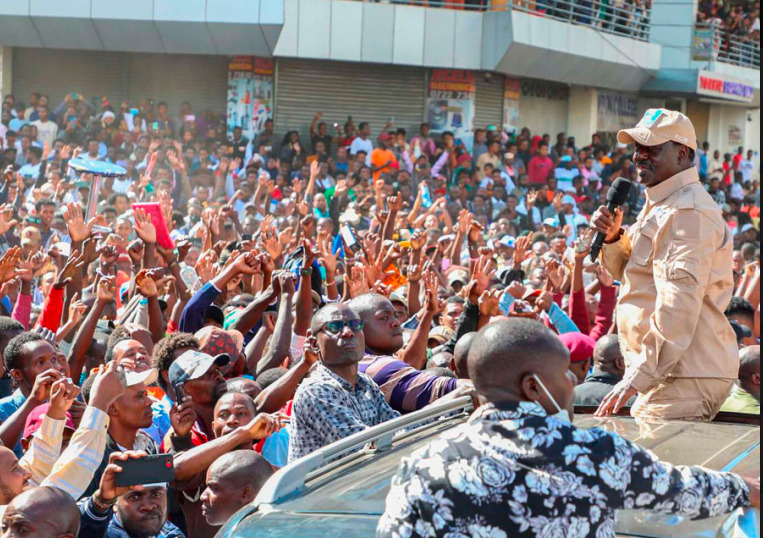‘Maandamano’ Monday and Thursday: Analysis of possible solutions to end demonstrations

Things were calm after the August 9, 2022, General Election. Kenyans returned to their normal routines after the results of the polls were announced.
However, a few months after the highly contested elections, the leader of the opposition, Mr Raila Odinga, called for protests for what he termed as the high cost of living under the current regime led by President William Ruto.
Countering this, President Ruto denounced the claims saying that the opposition was taking advantage of the current economic crisis to air their August 9 poll grievances.
During an interview with DW News on Monday, March 27, the President termed the previous election as the best election ever.
“We had the best-ever election last year,” he said.
Further, he denounced claims that Azimio la Umoja supporters were demonstrating over the high standards of living in Kenya.
“Riots in Nairobi are not so much about the cost of living. It is so much about election results that are actually settled,” President Ruto added.
Mr Odinga announced that anti-government protests would take place twice a week — on Mondays and Thursdays — as a response to what he termed as “public demand.”
“Fellow Kenyans, in the second phase of our protest, and in response to public demand, we shall now hold the protests every Monday and Thursday beginning next week,” he said.
The opposition also called on the President to “stop reconstituting the IEBC unilaterally and packing it with his puppets without the involvement of other stakeholders.”
“We demand that the four commissioners who were forced to resign because they differed with [former IEBC chairman Wafula] Chebukati on the results [of the presidential election] must be reinstated,” The Azimio la Umoja leader said. In addition to their reinstatement, Mr Odinga also wants the servers to be opened.
“We maintain that IEBC must open the servers and allow an independent international audit that will, without doubt, prove to Kenyans that Ruto did not win,” Mr Odinga said.
The then IEBC vice-chair Juliana Cherera alongside commissioners Francis Wanderi, Justus Nyangaya and Irene Masit were forced out on accusations they had tried to block Dr Ruto’s declaration as President-elect in an attempt to force a runoff vote with his main challenger Mr Odinga.
Their exit, alongside the retirement of Mr Chebukati and commissioners Moya Bolu and Abdi Guliye, who stood by the declaration of Dr Ruto as President-elect last August, has occasioned seven vacancies at IEBC.
Some of the possible solutions to end the ongoing protests:
- President Ruto should seek talks with Azimio leader Raila Odinga
With the intervention of the church and other religious groups’ leadership, President Ruto and Azimio leader Raila Odinga can have talks. This will help broker a political truce. Leadership is about putting the interests of others first and at heart. This is where both leaders are put to the test. Just like Late President Mwai Kibaki and former President Uhuru Kenyatta did during such eventualities, President Ruto is no exception. This will help calm the current situation and peace will prevail in the country.
- President Ruto can find peace with former President Kenyatta
There has been animosity between President Ruto and former President Kenyatta. The two need to settle this for the country to be at peace.
- Divide and rule
Divide and rule is gaining and maintaining power divisively.
However, it has been hard to distinguish between the exploitation of pre-existing divisions by opponents, and the deliberate creation or strengthening of these divisions implied by “divide and rule”.
President Ruto can employ divide and rule to reach out to some of the Azimio bigwigs like Wiper leader Kalonzo Musyoka or Narc Kenya boss Martha Karua.

